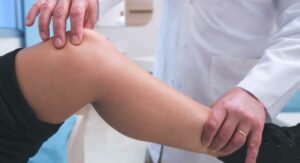Do you sometimes feel like you need to take a break from the world? Maybe you’re feeling overwhelmed by stress or anxiety. Or maybe you’re just feeling lonely and need some company. If so, then pop therapy may be right for you! Pop therapy is a type of counseling that involves listening to music. It can help improve your mood, reduce stress, and make you feel more connected to others. In this blog post, we will discuss what pop therapy is and how it can help you!
Contents
What Is POP Therapy?
 It’s short for “positive psychology and outpatient therapy,” a type of counseling that emphasizes the positive aspects of life, rather than focusing on negative experiences or disorders. POP therapy is based on the idea that humans are innately resilient and capable of overcoming challenges. The goal is to help people thrive, rather than just survive.
It’s short for “positive psychology and outpatient therapy,” a type of counseling that emphasizes the positive aspects of life, rather than focusing on negative experiences or disorders. POP therapy is based on the idea that humans are innately resilient and capable of overcoming challenges. The goal is to help people thrive, rather than just survive.
This therapy was developed in the late 1990s by Dr. Martin Seligman, a psychologist who is considered the father of positive psychology. He was interested in finding ways to help people not just cope with problems, but actually thrive and lead fulfilling lives.
How Does It Work?
POP therapy is based on the idea that humans are innately social creatures. That is, we are wired to connect with others and to seek out social interaction. This need is so fundamental that it’s thought to be encoded in our DNA.
POP therapy seeks to capitalize on this by providing opportunities for social interaction and connection. It does this in a number of ways, including:
- Fostering relationships: This encourages patients to develop relationships with their therapists and with other patients in group settings. These relationships can provide much-needed support and social connection.
- Encouraging positive interactions: It focuses on promoting positive interactions between patients and others. This includes things like teaching patients how to communicate effectively and how to resolve conflict.
- Providing structure: It provides patients with a sense of structure and routine. This can be helpful for those who feel lost or adrift in their lives.
POP therapy is still relatively new, and more research is needed to determine its efficacy. However, preliminary studies suggest that it may be an effective treatment for a variety of mental health conditions, including depression, anxiety, and loneliness.
If you’re interested in POP therapy, talk to your mental health provider. They can help you find a therapist who specializes in this treatment.
What Conditions Does POP Therapy Help With?
 There are a few conditions that have been studied in relation to POP therapy. The most common condition is pelvic organ prolapse, which is when the pelvic organs (uterus, vagina, bowel, or bladder) drop down from their normal position in the pelvis.
There are a few conditions that have been studied in relation to POP therapy. The most common condition is pelvic organ prolapse, which is when the pelvic organs (uterus, vagina, bowel, or bladder) drop down from their normal position in the pelvis.
This can happen when the muscles and ligaments that support the pelvic organs become weak or stretched. Other conditions that POP therapy has been studied for include:
- Urinary incontinence
- Fecal incontinence
- Anal fistulas (Fistula Treatment)
- Rectal prolapse
It is believed that POP therapy may help with these conditions by strengthening the pelvic floor muscles. This can lead to better support of the pelvic organs, which may help to improve or prevent symptoms.
Therefore, if you are suffering from any of the above conditions, you may want to consider POP therapy as a possible treatment option.
What Does POP Therapy Involve?
POP therapy generally involves exercises that are specific to the pelvic floor muscles. These exercises can be done either manually or with the help of devices.
Manual exercises usually involve the person contracting and relaxing the pelvic floor muscles repeatedly. This can be done either sitting or standing. For example, one exercise might involve sitting on a chair and slowly contracting the pelvic floor muscles for 5 seconds and then relaxing them for 5 seconds. This process would be repeated 10 times.
Alternatively, there are devices that can be used to help with POP therapy exercises. One such device is called a perineal dilator. This is a small, rod-like device that is inserted into the vagina. The person then contracts and relaxes the pelvic floor muscles around the device.
Another common device used in POP therapy is an inflatable balloon. This is inserted into the vagina and then inflated. The person then contracts and relaxes the pelvic floor muscles around the balloon.
If you are doing POP therapy at home, it is important to make sure that you are using the correct technique. You can find instructions and demonstrations online or from a healthcare professional.
What Are The Benefits?
 There are many benefits associated with pop therapy. Some of the benefits include:
There are many benefits associated with pop therapy. Some of the benefits include:
- Increased self-esteem and confidence
- Improved communication skills
- Enhanced social skills
- Greater ability to express emotions
- Improved mental well-being
- Increased ability to cope with stress and anxiety
- Improved physical well-being
It is often used as a treatment for conditions such as depression, anxiety, and post-traumatic stress disorder (PTSD). It can also be used to help people who have difficulty coping with loss or grief. There are many different types of pop therapy, and each one can be tailored to meet the needs of the individual.
So, do not hesitate to give it a try! Pop therapy might just be the thing you need to help you cope with whatever life throws your way.
What Things You Should Consider?
This type of therapy can be very helpful if you are struggling with mental health issues. It can help you to feel better and cope with your problems in a more positive way. However, there are some things that you should consider before starting this type of therapy.
- Make sure that you are ready to commit to the therapy. This type of therapy can be very helpful, but it takes time and effort to see results. If you are not ready to commit to the therapy, it may not be right for you.
- Make sure that you have a good support system in place. This type of therapy can be emotionally challenging. It is important to have a support system in place to help you through tough times.
- Make sure you are willing to work hard. This type of therapy requires a lot of work on your part. You will need to be willing to put in the effort to see results.
- Make sure that you are comfortable with the therapist. It is important to feel comfortable with the person you are working with. If you do not feel comfortable, it may be difficult to open up and get the most out of the therapy.
- Make sure that you are prepared for the cost. This type of therapy can be expensive. Make sure you are prepared to pay for the sessions before you begin.
If you are considering pop therapy, it is important to consider these things before you start. This type of therapy can be very helpful, but it is not right for everyone. Make sure you are ready to commit to the therapy and willing to work hard before you begin. If you do, pop therapy can be a great way to improve your mental health.
Conclusion
To conclude, POP therapy can be an extremely beneficial way to treat a number of different disorders and conditions. It can help you to feel more in control of your life and can provide you with the tools you need to manage your condition in a healthy and effective way.
If you think that POP therapy could be right for you, then be sure to speak to your doctor or mental health professional about it. They will be able to advise you on whether or not it is an appropriate treatment for you and can help you to get started on the path to recovery.
Physical Therapy help patients recover from pain. If you’re experiencing Back pain, Shoulder pain, Knee pain, Neck pain, Elbow pain, Hip pain, or Arthritis pain, a physical therapist at MantraCare can help: Book a physiotherapy session.


